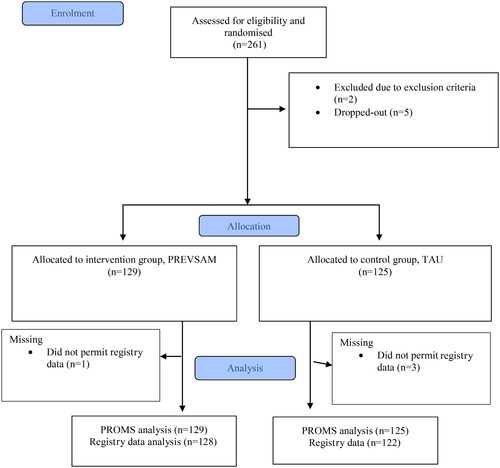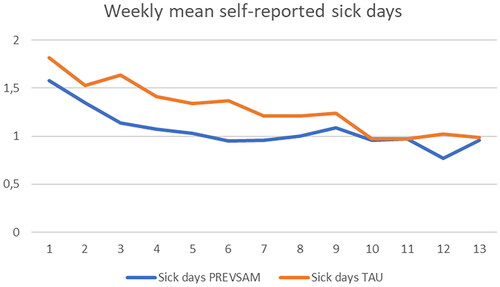Figures & data
Table 1. The PREVSAM model’s components and differences towards treatment as usual within primary care rehabilitation.
Figure 1. Flow chart of participants’ enrolment and allocation.

Table 2. Baseline demographics regarding sex, place of birth, marital status/living situation, and age.
Table 3. Baseline demographics regarding education level, occupation, and income.
Table 4. ICD-10 diagnoses reported by the team members in the PREVSAM group and in TAU.
Table 5. Comparison of proportions of patients remaining in full- and part time work (no registered sickness benefit days) between the PREVSAM group and TAU.
Table 6. Comparisons of registered sickness benefit days between the PREVSAM group and TAU.
Table 7. Comparison of proportion of patients with self-reported sickness absence between the PREVSAM group and TAU.
Table 8. Comparison of self-reported sickness absence days between the PREVSAM group and TAU.
Figure 2. Mean self-reported sick days per week for the PREVSAM and TAU groups.

Table 9. Differences in patient-reported health outcomes within and between groups.
Data availability statement
The data are available on reasonable request.
